There has been a rise in home studios over the last decade, but most people can’t afford a $5,000 microphone. In this article, we will explore the Audio Technica AT2035 microphone. Let’s find out if it’s a good piece of gear for musicians.
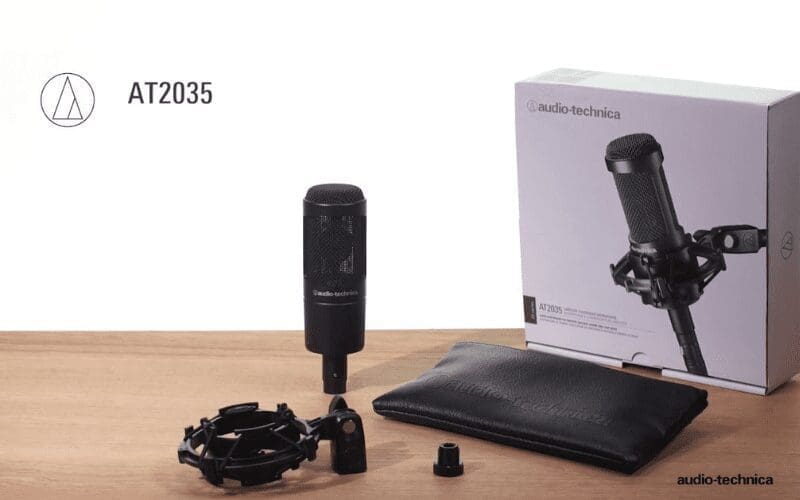
We will look into the history of the Audio Technica AT2035. Also, why the AT2035 would be a good option for your music needs.
Let’s get into everything you need to know about the Audio Technica AT2035
What Is The Audio Technica AT2035?
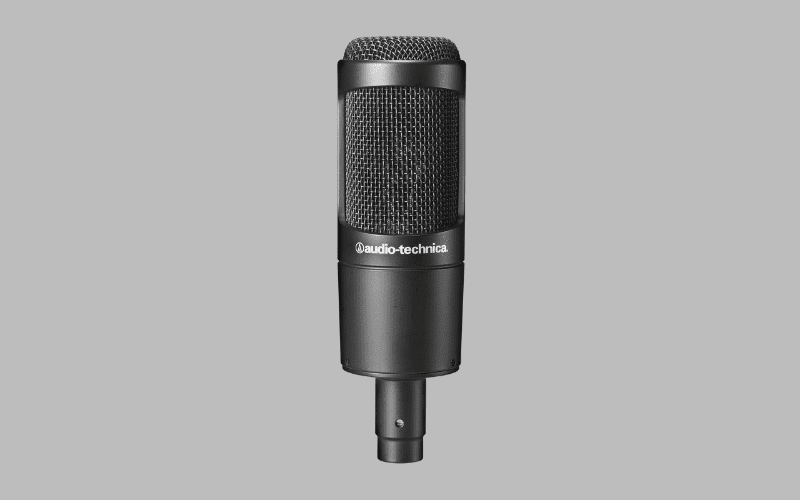
The Audio-Technica AT2035 is a cardioid condenser microphone. The budget-friendly AT2035 is a great multi-purpose cardioid condenser microphone, including detailed frequency response.
Its cost-effective pricing makes it one of the top choices for home recording studios, hobbyists and professional recording studios.
The Audio-Technica At2035 is designed for home, project/professional studio and live performance. Due to its “heart shaped” polar pattern, the cardioid condenser microphone delivers exceptional detail and low noise. The microphone is equipped with a switchable 80 Hz high-pass filter and 10 dB pad.
The AT2035 can also handle high sound pressure levels with relative ease. In addition to its rugged exterior and high-performance specifications, the AT2035 has a consistent and exceptional level with each model. The competitive priced cardioid condenser microphone comes equipped with a custom shock mount and protective pouch.
The Audio Technica AT2035 is on retail for $149.00.
Who Is Audio Technica?

Audio-Technica Corporation, is a Japanese-owned company that designs and manufactures a wide range of sound instruments. For instance, professional microphones, turntables, headphones, phonographic magnetic cartridges, and other audio equipment.
Audio-Technica was founded in 1962 in Japan by entrepreneur Hideo Matsushita as a phonograph cartridge manufacturer. Their first products were the AT-1 and the AT-3 MM stereo phono cartridges. As business rapidly developed, Audio-Technica expanded into other fields, including entertainment.
From the 90’s, Audio-Technica has been a major supplier of microphones and headphones for US television shows. Such as; Deal or No Deal and Big Brother. Also, the Summer Olympic Games: Atlanta 1996, Sydney 2000, Athens 2004, Beijing 2008 & London 2012. They also supplied microphones for Rock and Roll Hall of Fame inductions and other international events.
Features & Specifications Of The Audio Technica AT2035
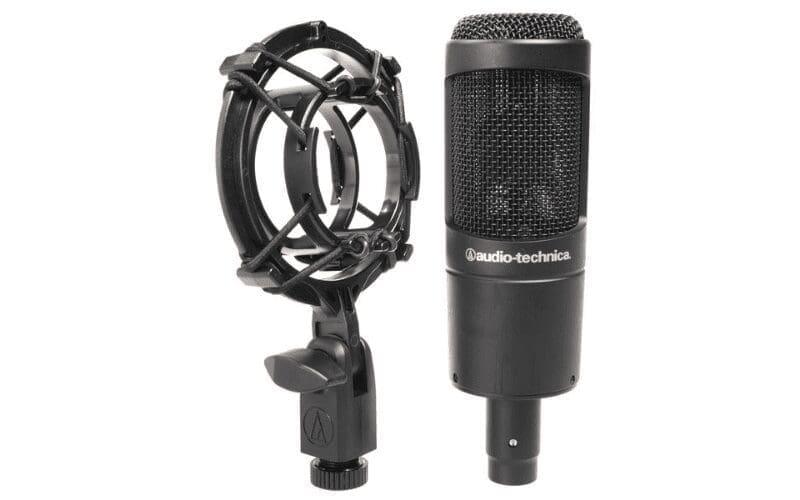
Below is everything you need to know about the features and specifications of the Audio Technica AT2035.
| Element | Fixed-charge back plate, permanently polarized condenser |
| Polar Pattern | Cardioid |
| Frequency Response | 20-20,000 Hz |
| Low Frequency Roll Off | 80 Hz, 12 dB/octave |
| Open Circuit Sensitivity | -33 dB (22.4 mV) re 1V at 1 Pa |
| Maximum Input Sound Level | 148 dB SPL, 1 kHz at 1% T.H.D.;158 dB SPL, with 10 dB pad (nominal) |
| Noise | 12 dB SPL |
| Dynamic Range | 136 dB, 1 kHz at Max SPL |
| Signal-to-Noise Ratio | 82 dB, 1 kHz at 1 Pa |
| Phantom Power Requirements | 11-52V DC, 3.8 mA typical |
| Switches | Flat, roll-off;10 dB pad (nominal) |
| Weight | 403 g (14.2 oz) |
| Dimensions | 170.0 mm (6.69″) long,52.0 mm (2.05″) maximum body diameter |
| Output Connector | Integral 3-pin XLRM-type |
| Accessories Included | AT8458 shock mount for 5/8″-27 threaded stands; 5/8″-27 to 3/8″-16 threaded adapter; soft protective pouch |
| Audio-Technica Case Style | R5 |
Audio Technica AT2035 Compatibility
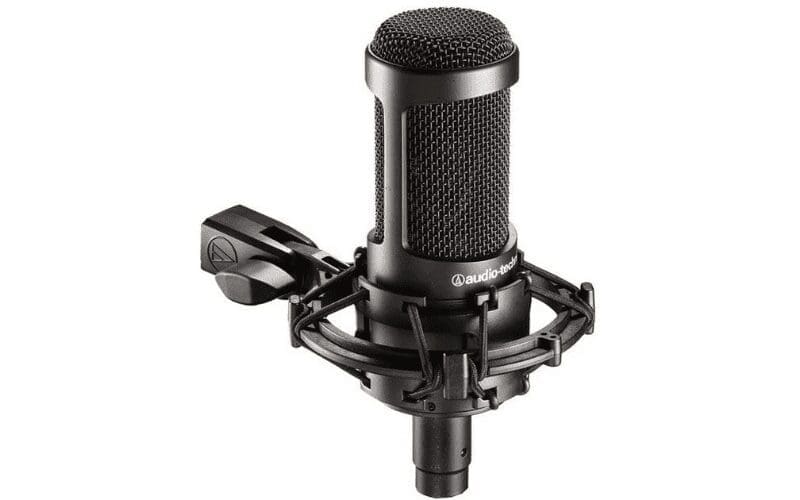
The Audio Technica AT2035 is compatible with both Mac and PC operating systems. However, you will need an audio interface with a USB output and phantom power.
Let’s take a look at what else you will need to get the most out of this microphone.
Extra Accessories
The AT2035 is a condenser microphone and requires phantom power. Therefore you will need to use an audio interface for phantom power, in addition to a USB output.
The interface would need to have an XLR female to XLR male balanced microphone cable to connect the microphone to the interface input. A phantom power of 12 to 48V is the acceptable range. Besides the cable and audio interface, you will need a standard microphone stand and your AT2035 is ready to rock.
Pros Of The Audio Technica AT2035
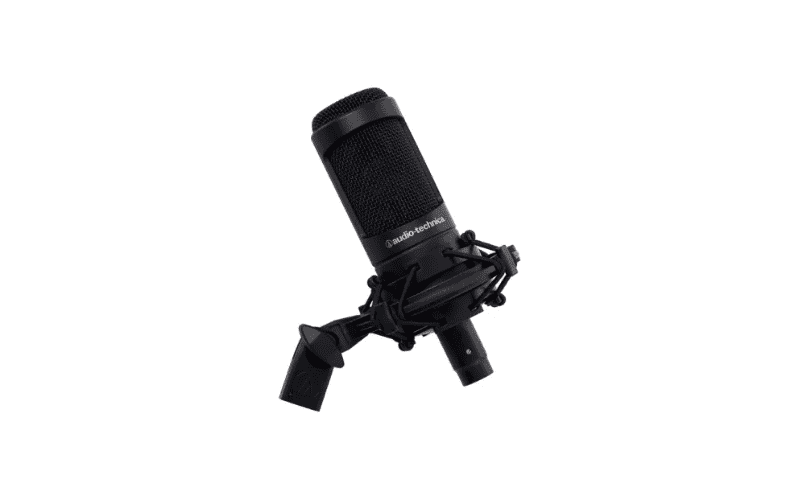
The AT2035 condenser microphone is not only a well built microphone, but it also has a quality sound for a microphone in this price range.
From our experience, the AT2035 is quite easy to use and tolerant of loud sound sources in the background.
The cardioid condenser microphone not only works well with vocals and other instruments, but as a sound designer, the AT2035 is also great for foley recording. It also comes with a shock mount and storage pouch.
Cons Of The Audio Technica AT2035
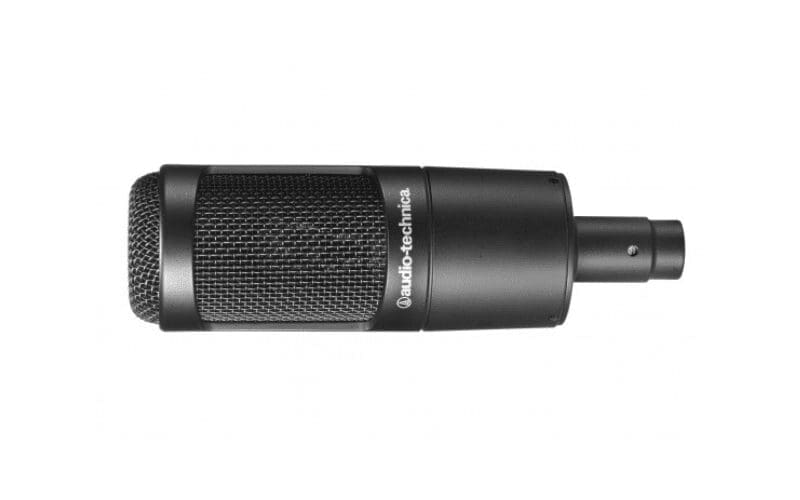
Due to the single polar pattern of the AT2035 Technica, it might lack versatility because it doesn’t pick up sounds in the rear.
Depending on the user, the polar pattern of the AT2035 can also be more positive than negative.
If you are a composer or sound designer, your goal will likely be to always simplify and find audio devices that can easily assist you, therefore the AT2035 has more positives than negatives.
Audio Technica AT2035 Alternatives
Besides the Audio Technica AT2035, there are other alternatives.
Therefore we will do a microphone shootout featuring the AT2020, Blue Yeti and the Rode NT1 alongside the featured star, the Audio Technica AT2035.
Blue Yeti
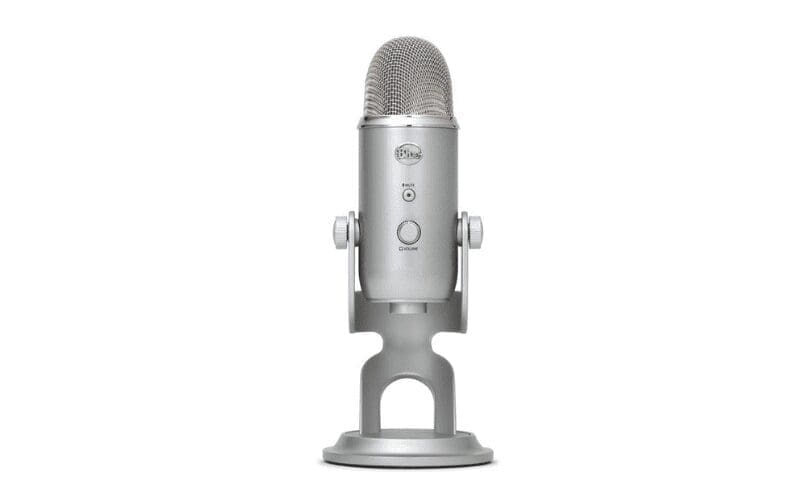
For many podcasters around the world, the Audio-Technica AT2035 and the Blue Yeti are their primary choice for podcasting. The AT2035 has outstanding performance and sound quality, whereas the Blue Yeti is more versatile and practical.
Both microphones have a similar frequency response of 20Hz – 20kHz/48kHz.
The AT2035 doesn’t come with a microphone stand and needs an audio interface to supply phantom power. The Blue Yeti is a USB microphone, therefore it can be easily connected to your PC or Mac without the need for an audio interface.
Due to its versatility, the Blue Yeti would be the best choice for podcasting. On sale for $129.00, Blue Yeti comes in 20 bucks cheaper than the AT2035. The Audio Technica AT2035 with a good sound quality and polar pattern, would be the best choice for a professional or home studio setup.
With an audio interface, the AT2035 is compatible with both Windows and Mac. It allows recording for multiple purposes, including podcast, voice cover, and in-house recordings.
Rode NT1
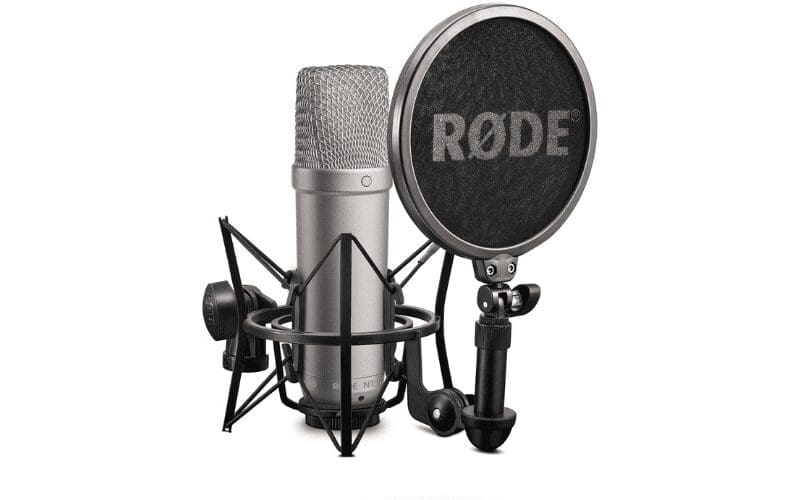
Both the Audio Technica AT2035 and Rode NT1 are found in multiple professional studios, amateur studios, and home recording setups worldwide. Both brands are reputable and provide excellent sound quality.
While both microphones are versatile and provide quality sound, we will explore both the AT2035 and Rode NT1 as vocal microphones.
The Rode NT1 and the AT2035 microphones feature a cardioid polar pattern, therefore they’re most sensitive to sound from the front; least sensitive from the rear and they are quieter from the sides.
At 440g, the Rode is heavier than the AT2035 at 403g, therefore the extra weight might give it a more reassuring feel. But what sets the Rode NT1 apart, is its Rycote’s industry-leading Lyre system which consists of the transducer suspended inside the microphone, therefore minimizing external vibrations at the capsule level.
The Audio Technica AT2035 and Rode NT1 are both versatile with the same polar pattern. With its high-quality electronics combined with the Rycote Lyre system, the Rode NT1 produces the lowest self-noise of any studio microphone available.
The AT2035 also features a good sound quality, but it isn’t as quiet as the Rode microphone. The AT2035 is more cost-friendly at $149.00 vs the Rode NT1 which is on sale for $269.00.
Depending on your budget, the Audio Technica AT2035 or the Rode NT1 will both give you a bang for your buck.
AT2020
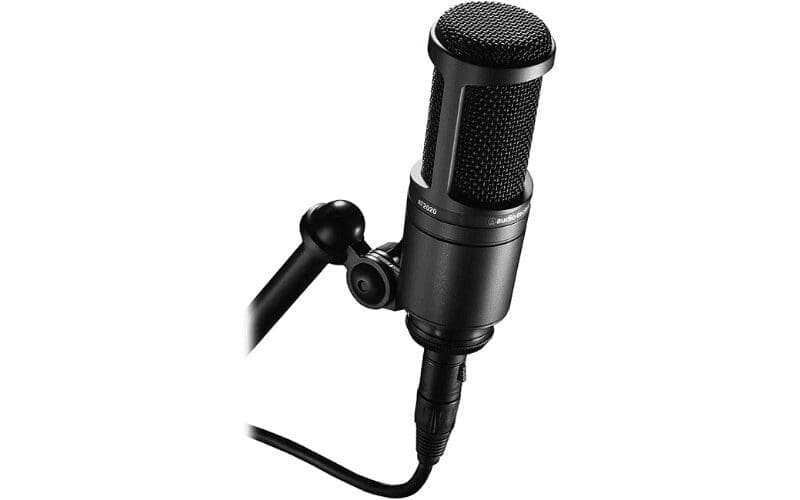
The Audio Technica AT2020 cardioid condenser microphone is Audio Technica’s first release into the world of microphones, therefore it can be described as a more “basic” version when compared to the more advanced models of the series, like the AT2035 or the AT2050.
The AT2020 and the AT2035 are designed for vocal recording and instruments in project and professional studios. Both Audio Technica microphones are multi-purpose tools with versatile applications and media production capabilities.
While both cardioid microphones have similar multi-purpose capabilities, the AT2035 has one particular advantage, which is the switchable 80Hz high-pass filter and 10dB pad. The switchable high-pass filter of the Audio Technica AT2035 gives you the ability to reduce low-end frequencies. This feature is particularly useful when you are recording vocals.
The Audio Technica AT2020 and the AT2035 share similar features, but the AT2035 is better equipped with more switch control features and versatility, including other unique settings.
The AT2020 which is a slight downgrade from the AT2035 is less expensive at a cost of $99.00, but it gives you close to equal value in product performance. Depending on your budget and if you are less concerned about a bit less control features, the Audio Technica AT2020 could be a good choice for you.
Summary
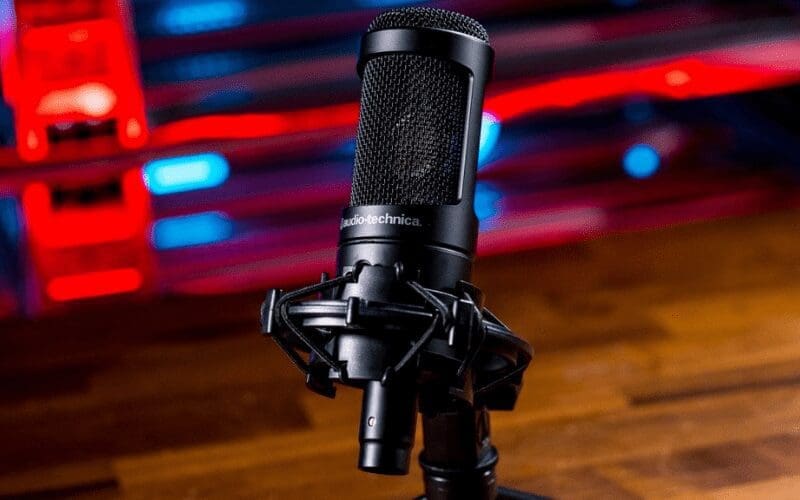
The Audio Technica AT2035 might not be the price of a world-class microphone, but the nifty cardioid condenser microphone can give you a bit of that world-class sound without breaking the bank.
For only $149.00, the AT2035 with its rugged exterior delivers exceptional detail and it’s quite low in noise. The Technica also has a smooth and natural sound, which is ideal for musicians, podcasters, streamers, seasoned rockstars, and other not so seasoned rockstars.
Find your inner rock star with the AT2035 and rock on like a superstar. You can even take it on the road and own the stage. One of the best condenser microphones in this price range and it’s only $149.00.
Have you ever used the Audio Technica AT2035? Let us know what your thoughts are in the comment section below, we would love to hear from you!









